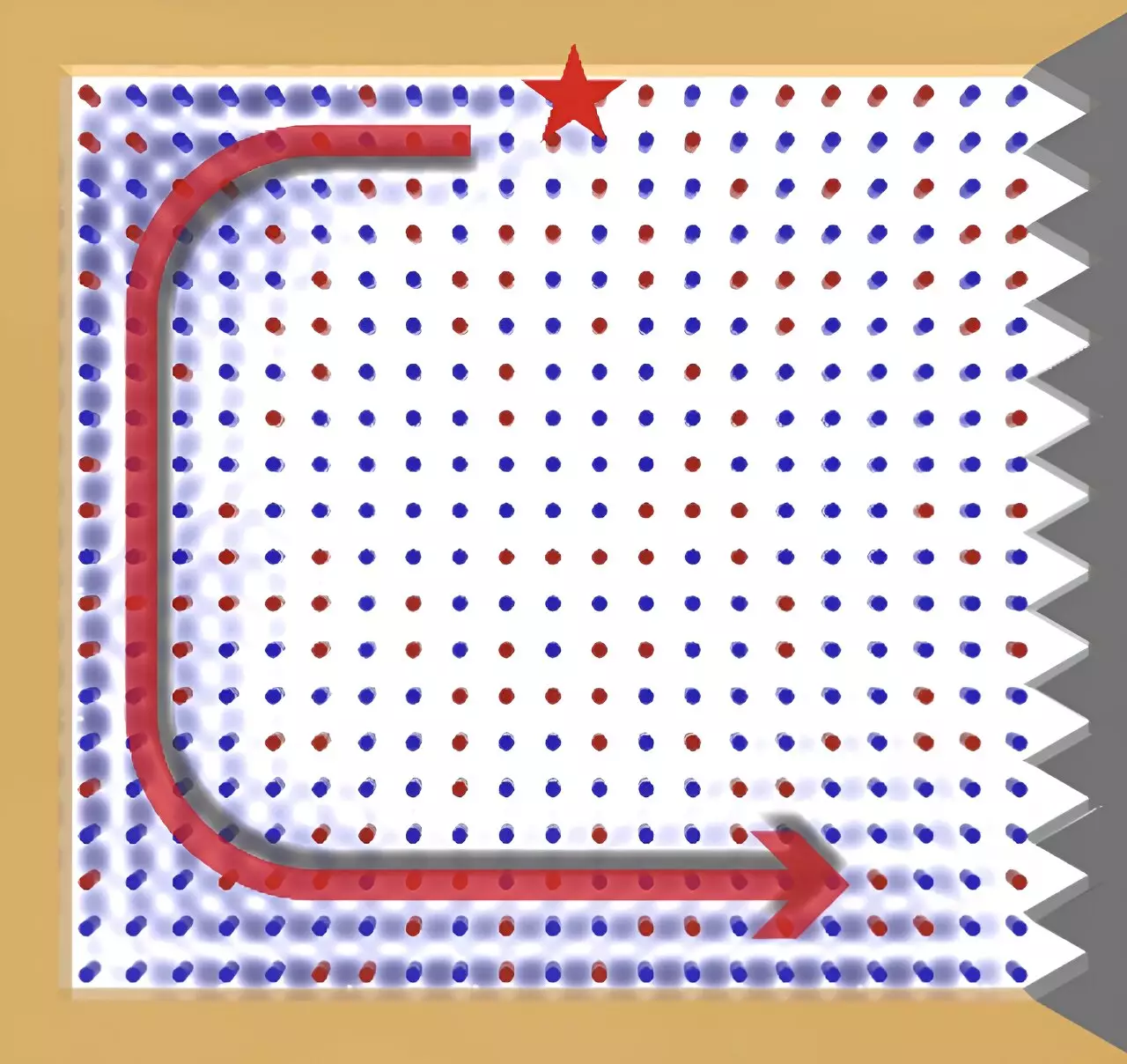Photonic alloys, combining multiple photonic crystals, have shown promise in controlling electromagnetic wave propagation. However, a major issue with these materials is light backscattering, which hinders data and energy transmission, ultimately affecting their performance as waveguides.
A New Approach
Recently, researchers at Shanxi University and the Hong Kong University of Science and Technology developed a novel photonic alloy with topological properties that allow microwaves to propagate without encountering light backscattering. By introducing nonmagnetized and magnetized rods in a nonperiodic 2D configuration, they were able to create photonic alloys with chiral edge states in the microwave regime.
The researchers used a combination of yttrium iron garnet (YIG) rods and magnetized YIG rods to create their material. They utilized a vector network analyzer to connect source and probe antennas, inserted through circular holes in a metal plate. By employing a metal cladding with a Chern number of zero, they were able to observe the emergence of a topological edge state at the boundary when covering a photonic topological insulator with a Chern number of 1.
The experiments showed that even with a low doping concentration of magnetized rods and without requiring order, the topological photonic alloy exhibited topological properties. This suggests that chiral edge states can be generated without breaking time reversal symmetry, paving the way for new possibilities in the realization of topological edge states.
Looking ahead, the researchers plan to explore multicomponent topological photonic alloy systems to manipulate various parameters and observe a wider range of effects. They also aim to extend their findings to the optical domain, offering new opportunities for light manipulation and the development of innovative photonic devices.
The development of topological photonic alloys represents a significant advancement in the field of waveguides and photonic materials. By addressing the issue of light backscattering and exploring the potential for optical applications, researchers are paving the way for exciting new developments in photonics technology.


Leave a Reply